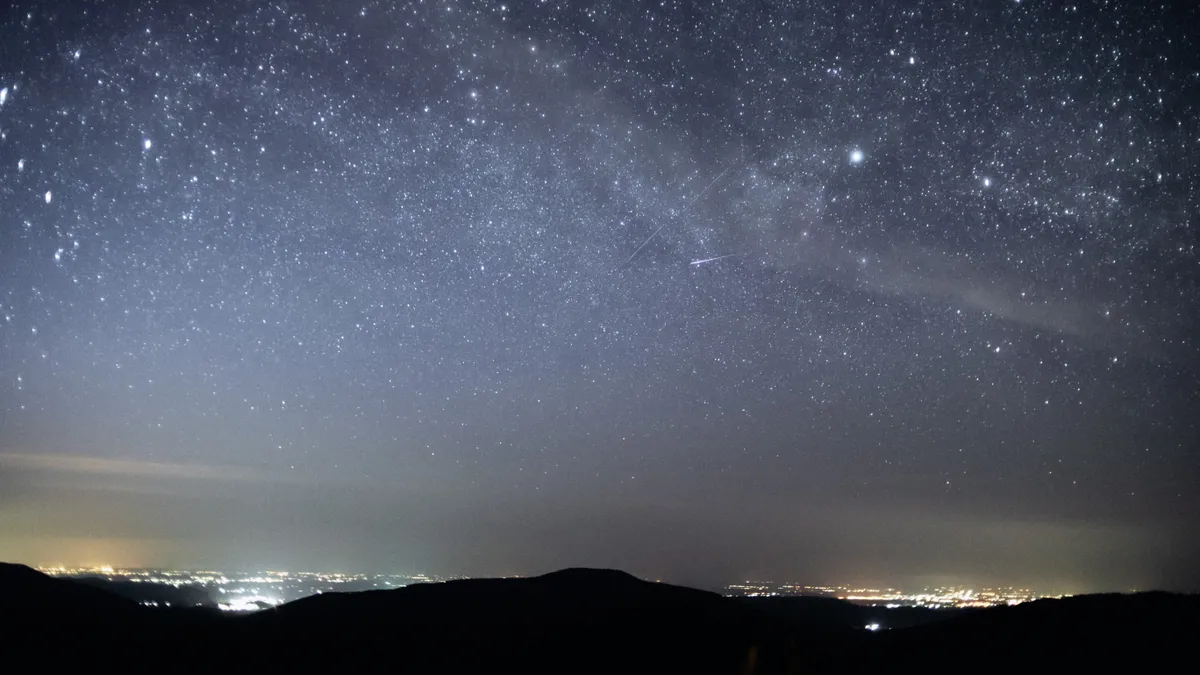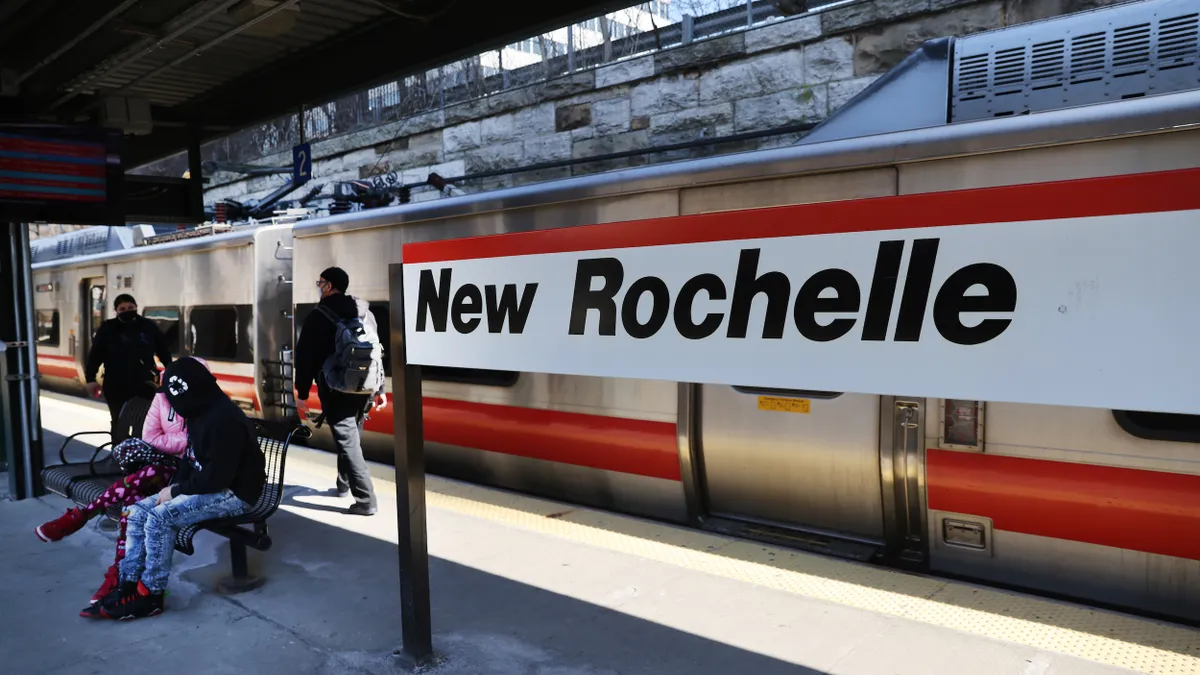You don’t have to be an astronomer to appreciate the beauty of a starry night.
In recent years, cities across the country have committed to preserving the view of the night sky by reducing light pollution. For some, that commitment included pursuing certification as a Dark Sky Community.
Earning the certification from DarkSky International can take years. Cities dedicated to the process, however, say it comes with a slew of benefits: They see not only the stars but also reduced energy consumption, lower electricity bills, healthier residents, improved environmental protection, increased ecotourism and even safer streets.
Communities seeking certification “already have some level of light pollution by nature of being … a city or town,” said Amber Harrison, Dark Sky Places program associate at DarkSky International. One of the certification program’s primary goals is to inspire policy change that results in improved lighting, i.e. less light pollution, in the built environment.
So far, 29 U.S. communities have completed the certification process. They’ve all passed dark-sky-friendly lighting ordinances; some retrofitted existing lights or ramped up community outreach campaigns to encourage residents and businesses to change their lights. The number of such communities is likely to grow as other cities work to become certified too.
Protecting the Texas Hill Country
Bee Cave is a small city not far from Austin, Texas. It received its Dark Sky Community designation in June, becoming one of several municipalities in the Texas Hill Country region to do so.
Bee Cave, like other Hill Country communities, “is surrounded by thousands of acres of preserve land [and] conservation land,” said Amanda Padilla, the city’s senior planner. Many people move to Bee Cave from larger cities “for that country feel,” Padilla said, which includes being able to see the night sky. “We thought we could do our part by becoming a [Dark Sky Community], not only for our residents but also to ensure that the habitats around us are … protected,” she said.
Padilla explained that many wild species “rely on the dark sky, either for migration or for hunting or for safety.” Light pollution can confuse animals and interfere with their natural instincts, she said.
Humans aren’t so different — our health can be affected by light pollution, too.
“Our continual exposure to light has been demonstrated to show a lot of negative health impacts,” DarkSky’s Harrison said, which include poorer sleep and mood issues, as well as metabolic disorders. Thus, if a city implements good lighting practices that reduce “light trespass” from businesses or residents, it will generally improve the community’s health and wellness, she said.
Reducing glare by shielding lights can also make residents safer, Harrison added. Pedestrians and drivers on the road are less likely to be temporarily blinded by a bright light if it’s directed toward the ground properly. “You do really notice a difference when you’re driving through a dark-sky city,” Padilla said.
Community power along Lake Michigan
In 2014, after more than five years of community efforts, the town of Beverly Shores, Indiana, became the world’s seventh certified Dark Sky Community.
When Rosemary and Alan Bell moved to the town on the shores of Lake Michigan in 2003, they bought a home in the woods, intending to be surrounded by nature. However, Rosemary said, “The [streetlight] outside our front room was so bright, you could read a book [by it].” When the Bells learned about the environmental and health problems associated with light pollution, they decided to take action.
As members of an active community association, the Bells worked to convince residents and the town council of the importance of a dark sky to animals as well as human health.
Though the council was in support of the project and of passing a lighting ordinance, the cost was an issue, the Bells said. When the town determined it didn’t have funds to contribute to streetlight retrofitting, the community raised nearly $8,000 from 60 residents to replace 48 streetlights with downward-facing lamps that limit light trespass.
Still, in 2017, the local utility replaced those streetlights with more efficient — but much brighter — LED bulbs, the Bells said. So the couple and the community went to work again, successfully urging the utility through petitions and email campaigns to reduce the Kelvin rating of the lights, thus making the bulbs warmer. The Bells said that residents also were able to talk the utility into partially shielding the lamps.
Rosemary said that while individuals have little control over industrial emissions, harmful lighting “is the one area of pollution we can do something about.”
Seeking darkness in Boulder City, Nevada
Boulder City, Nevada, is not yet certified as a Dark Sky Community, but it’s on its way.
Joe Stubitz, the city’s utilities director, said that Boulder City has been working toward certification since at least 2021, when officials learned that the city already had low levels of light pollution in some parts of the city, even though it’s only about a half hour’s drive from the Las Vegas Strip. They learned that with a few changes, Boulder City could make its lighting more sustainable, reduce energy costs, and, they hope, attract tourists wanting to view a dark, unobstructed night sky.
The certification process is ongoing. In September, the Nevada Division of Outdoor Recreation was awarded a $1.9 million grant from the U.S. Economic Development Administration for light retrofitting across Boulder City.
Stubitz said the city didn’t have an efficient lighting management plan in the past. Lights were replaced with LED lamps when they burned out. Now, Boulder City will have the funds to retrofit the lamps. The city is still deciding on the particular light they’ll use, Stubitz said, but the new streetlights will likely be warmer, dimmable and shielded. It’s an expensive project that likely wouldn’t be possible without the grant, he said.
As Boulder City completes the five-year retrofitting project, lower streetlight energy use will result in lower costs for utility ratepayers, Stubitz said. Plus, Boulder City plans to encourage businesses and residents to replace their own lights with dimmer options.
The city hopes that darker skies spark astrotourism — travel to observe astronomical phenomena — particularly from those already visiting Las Vegas. On the Strip, with its numerous bright lights, “you have the shows, you have the entertainment,” but in Boulder City, “you [can] have the opportunity to get a break from that [and] get a chance to relax and breathe,” he said.
“We’re hoping that this is another way to keep folks coming to Boulder City,” Stubitz said.



















